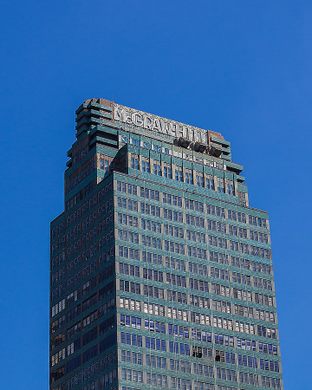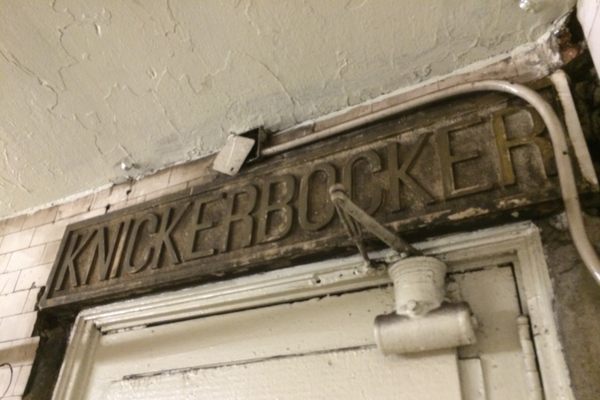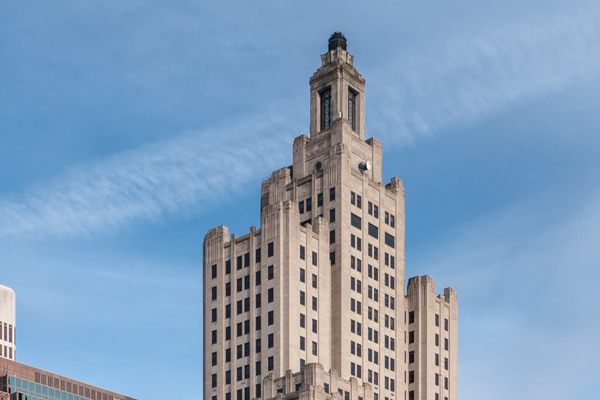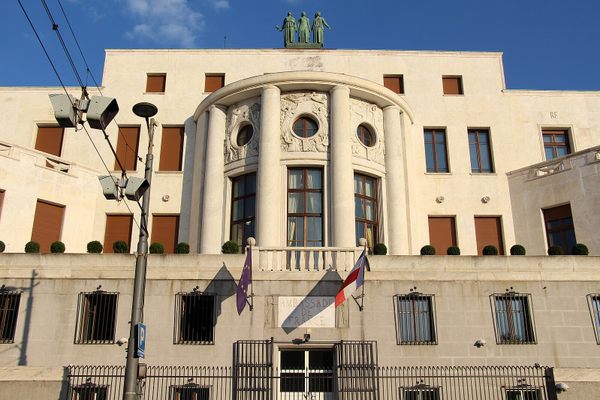The Old McGraw-Hill Building
Captain America, Sub-Mariner, and the Human Torch were all born in this art deco Manhattan masterpiece.
The area around the Port Authority Bus Terminal in New York City is, depending on your point of view, either best avoided, or an endearing holdout of the gritty old midtown of peepshows and flop hotels. But in the midst of all the grime and noise of the bus terminal is a building of such beautiful art deco design that it was the only New York building shown at the influential International Style Expo of 1932.
Completed in 1932, the same year as the Empire State Building, the skyscraper at 330 West 42nd Street was built specifically for publishing giants James McGraw and James Hill. McGraw chose for his architect Raymond Hood. A product of the Ecole des Beaux-Arts, Hood was responsible for some of America’s most outstanding buildings: the Tribune Tower in Chicago, the New York Daily News Building, and Rockefeller Center. As ostentatious as he was provocative, Hood is supposed to have been the inspiration for Peter Keating, Howard Roark’s foil in Ayn Rand’s The Fountainhead.
And the McGraw-Hill Building immediately divided opinion. Manhattan’s most colorful skyscraper, Hood covered the exterior with green terra-cotta tiling that slowly turned blue higher up the building; his intent was to have it dissolve into the color of the sky. The green metal windows trimmed with vermillion turned the McGraw-Hill Building into an emerald gem, even down to the green and silver uniforms worn by the doormen.
While not to everyone’s tastes (architectural critic Arthur North said it showed “disregard for every accepted principle of architectural designing in the most flagrant manner”), the 10th floor of the building became the home of Timely Publications, a pulp fiction company run by publisher Martin Goodman. On Columbus Day of 1941, Timely Publications posted a want-ad in the New York Times. The ad ran: “Comic Magazine Inkers Wanted: brush, no pen: must be familiar with technique of adventure comic magazines; suggest see Captain America Magazine for style before answering; salary or freelance basis. Bring sample to Room 1010, 330 West 42nd Street.”
For Timely Publications was no ordinary pulp magazine company. Aspiring artists bringing their samples to room 1010 would have found hard at work some of the most influential creators of the golden age of American comic books. Timely’s first editor Joe Simon, along with artist Jack Kirby, created Captain America there. In Captain America Comics #1 (the cover of which has Cap cold-cocking Hitler), the building’s address was even given for fans who wanted to write to the good Captain. Building on the success of million-selling titles like the Human Torch (the robot one) and the Sub-Mariner, Timely would eventually become Marvel Comics. When Simon and Kirby left for National Comics (later DC), the 19-year-old general office assistant Stanley Lieber was made editor. He would later become much more famous under his assumed name: Stan Lee.
Today the McGraw-Hill Building’s best days are behind it. Scaffolding covers the art deco font McGraw-Hill sign that decorated the entrance and top of the once-gleaming building. Timely Comics moved into the Empire State Building and Room 1010, once home to some of the most creative legends in the history of comic books, is now the office of a pension advocate program for seniors. The McGraw-Hill Company vacated the building for 6th Avenue years ago, but Raymond Hood’s emerald green masterpiece is still there, a little worse for wear, but still, as Ayn Rand described in 1943, “the most beautiful building in New York City.”
Community Contributors
Added by
Edited by
The Atlas Obscura Podcast is Back!



























Follow us on Twitter to get the latest on the world's hidden wonders.
Like us on Facebook to get the latest on the world's hidden wonders.
Follow us on Twitter Like us on Facebook